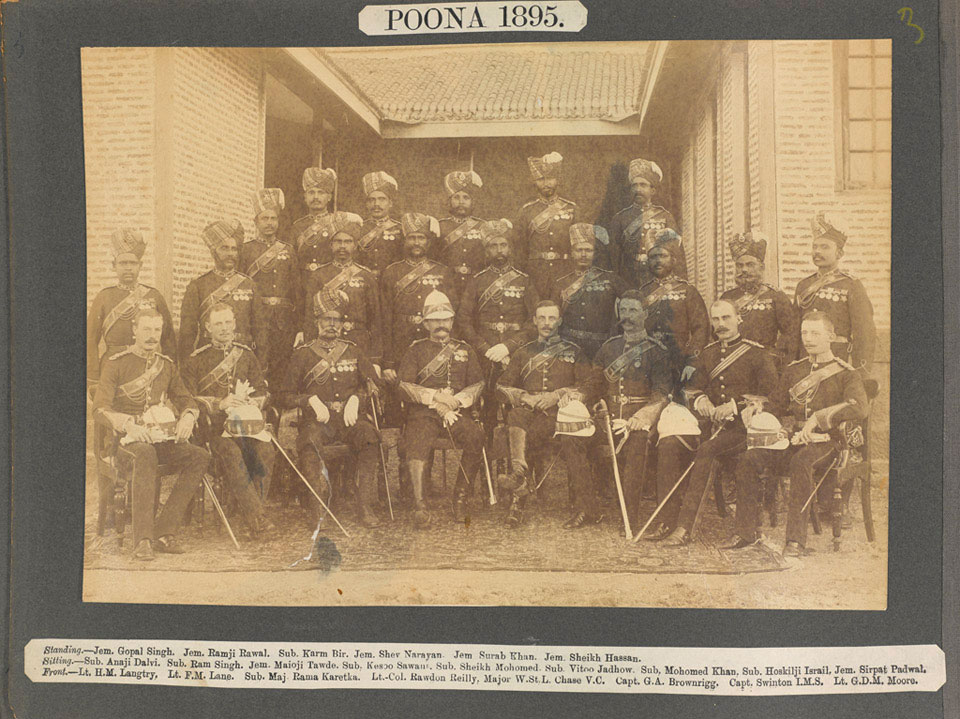
Online Collection
« Prev - 1 of 1 results - Next »
'Poona 1895', 28th (Pioneer) Regiment of Bombay Infantry
Photograph, Poona, India, 1895.
The sitters are named as: (standing, left to right) Jemadars 'Gopal Singh', 'Ramji Rawal'; Subabdar 'Karm Bir'; Jemadars 'Shev Narayan', 'Surab Khan' and 'Sheikh Hassan'; (seated, left to right') Subadars 'Aaji Dalvi', 'Ram Singh', Jemadar 'Maioji Tawde', Subadars 'Kesoo Sawant' (Kesu Sawanth), 'Sheikh Mohomed', 'Vitoo Jadhow' (Vitoba Jadhow), 'Mohomed Khan', 'Hoskilji Israil' (Hoskelji Ismail) and Jemadar Sirpat Padwal'; front row (left to right): Lieutenant H M Langtry, Lieutenant (later Major) Frank Macdonald Lane, Subadar Major 'Rama Karetka', Lieutenant Colonel Rawdon Edward Dennys Reilly, Major (later Colonel) William St Lucien Chase (Victoria Cross), Captain (later Lieutenant Colonel) George Alexander Brownrigg, Captain Swinton (Indian Medical Service) and Lieutenant (later Major) George Dashwood Maxwell Moore.
The 28th Bombay Native Infantry was raised in 1846. The term 'Native' was dropped from its title in 1885. In 1888 the regiment became the 28th (Pioneer) Regiment of Bombay Infantry. In 1901 the unit became the 28th Bombay Pioneers. It was renumbered the 128th Pioneers as part of the reform of the Indian Army in 1903. In 1922 the 128th Pioneers was amalgamated and formed the 3rd Battalion of the 2nd Bombay Pioneers. The regiment fought on the North West Frontier of India, the Sudan and served in the Middle East during World War One (1914-1918).
From an album of photographs relating to the 28th Regiment of Bombay Native Infantry, 128th Pioneers, 2nd and 3rd Battalions Bombay Pioneers, 1889-1930.
NAM Accession Number
NAM. 1953-12-10-3
Copyright/Ownership
National Army Museum, Out of Copyright
Location
National Army Museum, Study collection
Object URL
https://collection.nam.ac.uk/detail.php?acc=1953-12-10-3

